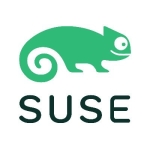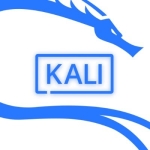What is our primary use case?
My main use cases for Red Hat Enterprise Linux (RHEL) in this company include running some mission-critical databases, which include Oracle, and one of our document imaging applications.
What is most valuable?
The best feature of Red Hat Enterprise Linux (RHEL) is the easy virtualization on any of the VMware platforms, and now we are also trying on OpenShift, which is very helpful. These features benefit my company by reducing the downtime, which is the main help.
What needs improvement?
I describe my experience with deploying Red Hat Enterprise Linux (RHEL) as a bit challenging because it is very advanced on the AIX side or HP-UX side in terms of creating the image and directly building a new server or recovering a server; that is still a challenge on the Red Hat side with that rear image, but now they are improving upon that, and I'm hoping Red Hat 10 will have better options.
Red Hat Enterprise Linux (RHEL) can be improved to keep pace with the dynamic world of IT, especially as artificial intelligence and other technologies evolve.
So far, we are very satisfied with Red Hat Enterprise Linux (RHEL)'s built-in security features when it comes to simplifying risk reduction and maintaining compliance. However, we are exploring further, as there are always challenges, especially when it comes to well-known bugs that need addressing before deployment. I’m expecting more automation in this area. Ideally, it should be handled automatically, allowing us to say, "You don't need to do anything; I’ll take care of that."
For how long have I used the solution?
I have been using Red Hat Enterprise Linux (RHEL) for probably fifteen plus years.
What do I think about the stability of the solution?
Red Hat Enterprise Linux (RHEL) has helped mitigate downtime and lower risks because we used a lot of freeware Linux systems before, which posed challenges when bugs came up, leading to struggles when solutions weren't available. With Red Hat Enterprise Linux (RHEL) and support from Red Hat, if issues arise, we can get quick support and resolution, making it very helpful.
What do I think about the scalability of the solution?
So far, Red Hat Enterprise Linux (RHEL) scales with the growing needs of my company, but we need to see how this next big change towards artificial intelligence will unfold.
How are customer service and support?
The knowledge base on their website and other resources is quite helpful. However, I have faced several challenges with support, not only with Red Hat but also with other vendors. Typically, when we open a support case with Red Hat, it is assigned to the first level of support. Even when we clearly outline the issue and request a timely response, the case often takes longer than expected to resolve. Sometimes, the support team asks unnecessary questions that are not relevant to the issue at hand.
I believe this is not just a problem with Red Hat; many vendors exhibit similar behaviors. There are knowledgeable individuals on the support team who could assist effectively, yet the initial support level often asks basic questions that do not pertain to the problem we're experiencing. It would be beneficial to streamline the process to ensure that appropriately skilled personnel are assigned to cases more quickly.
My experience with customer service and technical support has been mixed; sometimes it has been excellent when we get the right person at the right time, but otherwise, it is always a challenge, even though we pay for the highest support and have a special Account Executive or Account Manager assigned to us.
How would you rate customer service and support?
Which solution did I use previously and why did I switch?
We mostly used free Linux, but our critical systems were on Red Hat ever since we started migrating from HP-UX, which is not Intel-based, but rather RISC-based systems, even AIX.
What was our ROI?
I expect to see a return on investment once we start migrating from VMs on VMware to Red Hat or OpenShift.
Which other solutions did I evaluate?
I have not considered switching to another solution that does the same, but there is always pressure from the company to reduce costs. They question why we don't just use free Linux, Ubuntu or other flavors, which we are using, but not for our critical applications. The main difference is support.
What other advice do I have?
Security requirements are always a consideration before choosing Red Hat Enterprise Linux (RHEL) because we are living in a different world. I always have upgrade or migration plans to stay current and we are very aggressive about it, except when the application vendor says it's not supported on the new version yet, which is the only bottleneck.
For the management of Red Hat Enterprise Linux (RHEL) systems, a lot of processes are currently manual, although we are using some features and trying to do a lot of automation with Ansible, which we just started implementing, to complete the automation process.
We are always very aggressive with upgrades, except when an application states that it does not support the new version. That's the only drawback we face.
For someone considering Red Hat Enterprise Linux (RHEL) for their company, I advise conducting some kind of PoCs to understand how it works, and I would then recommend going ahead as it represents the future.
I would rate Red Hat Enterprise Linux (RHEL) an eight out of ten.
Which deployment model are you using for this solution?
On-premises
Disclosure: My company does not have a business relationship with this vendor other than being a customer.
















